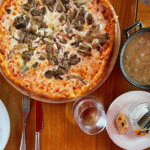On the personal level, food freedom system means eating without guilt, respecting hunger cues, and breaking free from restrictive diet culture. On the community level, it is a legislative effort to expand access to homemade foods by reducing unnecessary restrictions. By combining both of these sides, a system is created that regains faith in food, empowers people, and strengthens local food habits. Food is not just about calories but it determines our culture, feelings and our everyday lives. However, in the modern world, it seems that a lot of people are entrapped in the nature of a strict dieting, food guilt, and deprivation of really natural options. The food freedom system offers a way out of this cycle.
Food Freedom as a Mindset
The mental side of the food freedom system focuses on healing the relationship with food. People no longer have to switch between feeling guilty, restricted, and overeating, but should use the information their body sends them to answer hunger. It goes beyond the culture of diet where every meal feels like an infraction, and also advocates mindful eating.
Practical Steps to Start Practicing Food Freedom
- Drop the “good” vs. “bad” food labels. Allow all foods in moderation.
- Eat when hungry, stop when satisfied. Pay attention to fullness cues.
- Make eating a pleasure and not a diet. Meals are not supposed to be a source of worry, but of joy.
- Refocus on wellness rather than on weight. Long-term health, mood and energy are more important.
By way of example, a dieter, who may have been subjecting him/herself to years of diet regimes may now be able to relish four pieces of birthday cake without having a guilt trip over it. This liberation tends to have better long term eating habits due to the now-lapse of forbidden eating.
Food Freedom as a Legislative Movement
In addition to personal tastes, the food freedom system also presents a current shift toward enlarging the availability of homemade foods. For decades, selling home-prepared meals, baked goods, or preserved foods was limited by heavy regulation. Food freedom laws are challenging these barriers, giving families and small entrepreneurs the ability to share their products locally.
Real-World Examples
- In the United States, the states of Wyoming, North Dakota and Utah have enacted so-called food freedom laws, which eliminate licenses to sell homemade foods.
- The changes help local economies, limit food deserts, and tie people to traditional recipes that have been passed down throughout generations.
Connecting Mindset and Legislation
Although the two sides present an apparent difference, they connect the two at the deepest level. A culture that maintains homemade foods, also promotes the culture of variety, tradition and confidence in natural eating. People who exercise food freedom in consciences are in turn ready to accept a wider variety of food sources instead of processed and mass-produced foods. As an example, a person who has adopted mindful eating may order the bread baked by a local baker without purchasing packaged goods in a supermarket. The two support the notion that food has to treat the body and society.
Benefits and Risks of the Food Freedom System
Like any movement, food freedom comes with both opportunities and challenges.
| Aspect | Benefits | Risks/Concerns |
| Mindset | Minimizes food guilt, promotes mindfulness in eating habits, and mental healthiness | The risk of misinterpretation as eat anything anytime without balance |
| Legislation | Creates more access to local foods, supports small businesses, and preserves traditions | Risks to the food security should the hygiene norms be flaunted |
By acknowledging both sides, the food freedom system becomes more credible and practical. Supporters stress that education on safe food handling and balanced nutrition can minimize the risks.
Misconceptions About the Food Freedom System
Food freedom is not understood correctly by many people. It can be interpreted as neglecting nutrition by some and by some, they are afraid that it will pose unsafe food markets. The food freedom is in fact the balance and the empowerment. Mindset freedom imparts body respect, whereas the legislative freedom employs an approach of responsibility and trust between the local producers and consumers.
A Human Story: Living Food Freedom
Let us take the example of Maria, who is a 35-year-old and has been trying various diets on and off in more than 10 years. She was always deprived and felt guilty. Once adopting food freedom, she permitted herself to eat her cultural food once again, paid attention to her body and listened to her hunger cues, and experienced an increase in energy. Meanwhile, a neighbor, a retired woman, had begun selling homemade jam under her state’s new food freedom law. Both women became empowered: one- through attitude, the other one- through laws. Their testimonies show the manner in which this system changes lives of the individuals as well as communities.
The Future of the Food Freedom Movement
This is not a new trendy movement, the food freedom system is here to stay. This has led to further states and countries re-evaluating limiting food policies, and the rejection of diet culture by more people. In the next decade, we are likely to see:
- Greater acceptance of mindful eating as part of mainstream nutrition.
- Expansion of food freedom laws in more regions.
- Increased reliance on local food systems to fight against industrialized mass production.
These future points toward a healthier balance where people trust their bodies and communities trust their local food makers.
Frequently Asked Questions
1.What is the food freedom system in simple words?
It is a mindset and legal movement that helps people eat without guilt and expands access to homemade foods.
2.Is food freedom just about ignoring diets?
That is not true, because it is about changing from diet to mindful eating and honoring your body requirements.
3.Is food freedom law, safe?
Yes, when coupled with simple food safety knowledge they are responsible to consumers and producers alike.
4.Does food freedom help with losing weight?
Indirectly, yes. Many people find their dim equilibrium when it comes to stress reduction and creation of healthier eating habit.
5.Which jurisdictions already have food freedom laws in verbally active?
States such as Wyoming, Utah and North Dakota have enacted food freedom acts that are very powerful in nature with other regions gradually catching up.
Conclusion
The food freedom system is one of the new concepts regarding food. It helps one to forget about the guilt and constriction and also aids the community in eating homemade foods rights. By influencing both individual and legislative levels, this system will bring about healthier relationships with food and better local economies in addition to a positive future where food becomes a source of pleasure, bonding, and trust once again.





